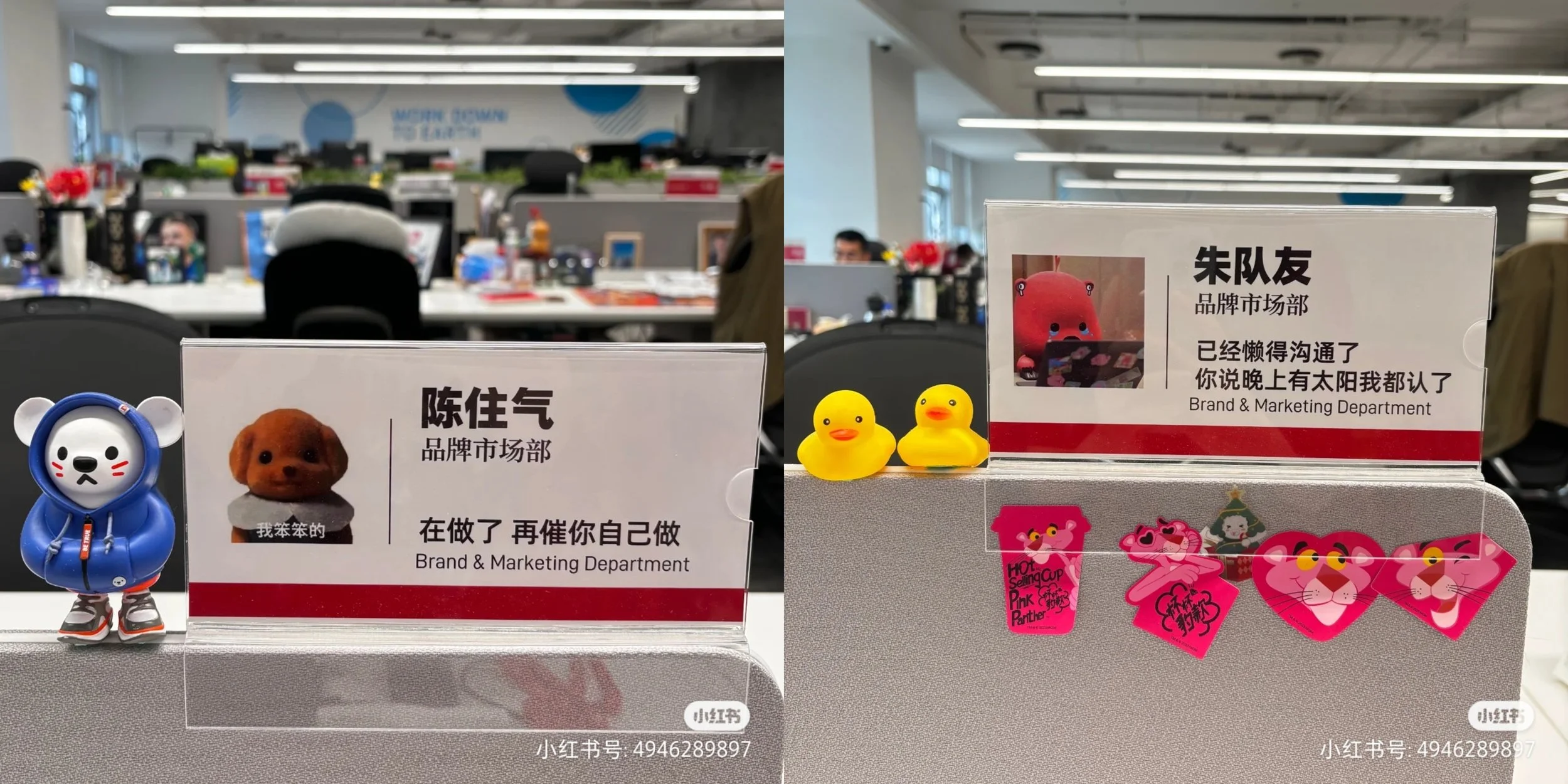What’s behind the popularity of matchmaking analyst bloggers?
Recently, a new type of blogger called ‘matchmaking analysts’ has become a hit. These ‘matchmaking analysts’ are like the Sherlock Holmes of the dating world.

Typical scene of a matchmaking analyst’s ‘classroom’ video. Image: Bilibili @探长森杰
They are skilled at analyzing every detail of a potential partner’s profile on a whiteboard. They break down each detail to reveal the hidden truths behind what’s being said. For example, if someone’s height is listed as 180 cm, it probably includes their shoes; if the size of the house isn’t mentioned, it’s likely a small one; and if someone comes from a highly-educated family but only has a bachelor’s degree, there might be some mental health issues. Their detailed and dramatic analysis is like a detective show, and it has captivated many viewers. Some even follow these analysts to guess the hidden meanings behind each detail. In fact, some of these analysts have gained 300,000 followers in just three days, while others have gained 500,000 followers in a month.

A matchmaking analyst (@探长森杰) on Bilibili has over 200,000 followers and more than 10 million video views on the platform alone. He has over 578,000 followers on Douyin. ‘Can I get married to this man?’ is the most common title for his videos.
So, why are these matchmaking analysts so popular?
They cater to single women:
These analysts mainly target single women, especially those aged 25-35, who are often very anxious about making the wrong choice in marriage. By analyzing potential partners’ details, they help women make more informed decisions, which attracts a lot of attention from this group.
The excitement of investigation:
Matchmaking analysts break down potential partners’ profiles like a mystery or detective story, which taps into people’s curiosity and desire to uncover hidden truths. The imbalance of information in the matchmaking world makes their analytical approach particularly appealing.
The novelty of their approach:
By applying a logical, analytical method to emotional matchmaking issues, these analysts turn the dating process into a kind of lesson or puzzle. This fresh and contrasting approach is what draws people in.
These analysts also offer paid consultation services, such as one-time sessions or monthly/yearly packages, turning their expertise into a profitable business.

A common fee standard for matchmaking analysis service (Image: 中新网):
¥88 ($12.1) for analyzing a matchmaking profile via video.
¥118 ($16.2) per question for a single consultation via voice call.
¥198 ($27.2) for a full day of consultation.
¥1,180 ($162.3) for a week of consultation.
¥3,880 ($533.7) for a month of consultation.
However, we have some concerns about the rise of these ‘matchmaking analysts.’ As they grow in influence, they’ll need to be more careful about following laws and regulations, especially regarding user privacy and information security. Additionally, relying on this kind of experience-based analysis is unlikely to significantly improve your chances of finding a suitable partner for marriage in reality. How far can a business like this go if it's just focused on providing emotional support and psychological comfort? Instead of just listening to online advice, it’s better to invest time in real-life interactions.
Elderly influencers provide a counter-narrative to China’s intense work culture, proving that seniors can live life on their own terms, which is proving endearing to young Chinese consumers often labelled as “fragile youth”
A Harper’s Bazaar campaign featuring hotpot CEOs is a testament to the power of blending fashion, culture, and business leadership. It not only redefines the role of CEOs in branding but also highlights broader trends in cultural revival, emotional connection, and experiential marketing.
AI has become an integrated tool for marketing in China 2025, making marketing easier at a surface level, but harder than it has ever been before. How do brands utilise AI to stand out?
A concise summary of last month's key marketing developments in China, highlighting valuable insights and their implications for brands.
A concise summary of last month's key marketing developments in China, highlighting valuable insights and their implications for brands.
With every major app in China integrating social, e-commerce, entertainment, livestreaming, and video into their suite, what sets RED apart as a marketing channel for brands?
Chinese youth embody a rich tapestry of lifestyles and values that defy easy categorization. In a social media world saturated with flashy façades and overly curated personas, many still celebrate authenticity and self-discovery. This creates opportunities for brands to craft fresh, compelling stories that resonate with their desire for genuine connection.
A wave of viral videos in China are flipping the script on traditional Chinese-style parenting. Filmed from a child's perspective, these clips turn guilt-inducing phrases back on parents, pushing them to reflect on their parenting approach.
China's cross-media ad spend is unlike other markets, as new data reveals. Comparing China to the US, UK, Canada, Australia and NZ highlights stark differences
Douyin provides a platform for ordinary people to build small businesses. By creating unconventional and slightly whacky livestreams and videos, they've captivated young audiences and driven significant sales, despite their simple, rough-around-the-edges style.
Xiaohongshu/RED launched the "5-Minute Workout Boost" campaign to coincide with the Paris Olympics and summer vacation, making exercise accessible and easy to fit into daily life.
On August 20, the game Black Myth: Wukong officially launched. As China’s first 3A title, it has not only taken the Chinese gaming industry, social media, and stock market by storm, but has also gained worldwide attention.
White-collar workers looking to lose weight are bringing one-cup mini lunches to work. Though just a few bites in size, they are tasty and nutritious. Lawson has tapped into this trend by launching their mini bento meals…
New types of bloggers called matchmaking analysts - the Sherlock Holmes of the dating world - are capturing much attention in China’s social media. There are the reasons for their popularity, but also concerns…
Despite the Paris Olympics getting mixed reviews in China so far, the opportunities for brands to align with sports to connect with consumers is large, and growing
‘Crazy ID Badges’ among post-00s white collars have become a trending topic on Xiaohongshu. Many FMCG brands have jumped on it to winning favour from the young consumers.
For about ¥200 ($27.50) a day, you can place your personal ad in some of China's metro stations. Chinese consumers are having a lot of fun with this platform job hunting, celebrating birthdays, proposing to loved ones, and even promoting influencer images…
With the explosive popularity of Jay Chou's Carnival Tour, his impersonators have also started their own live tours with super-expensive VIP tickets almost sold out
A simple, but fun and wacky AI-photo filter has taken off in China, illustrating the opportunities of AI-generated content for marketers
Douyin is moving from an embedded mall to a standalone app as it aims to break through existing limitations of its ‘interest-based e-commerce’ model
Zhou Guanyu, China’s first ever F1 driver is a valuable commodity for brands in China, including lululemon, McDonald’s, Puma, Dior, Hennessy and HSBC
Chinese youth behaviour gives hints to what connects with them, what is missing, and idealistic ways they view familial relationships
A large number of foreigners have suddenly started flooding into the "听劝 (listen to advice)" section of lifestyle social media platform, RED
AI influencers are shifting hefty sales volumes n Douyin, but on close inspection there are some tell-tale signs that they are not real people
Despite fatigue around the Subject Three dance craze, Yili has created another online dance sensation with dadadada
Three cute animals are connecting China’s young urban professionals at a mental health level, seeing them go viral and merchandised by big brands
China’s milk tea industry is encountering a little competition. Today, we explore the drivers of these Chinese-style yogurt drinks in the middle kingdom.
There are some staggering numbers highlighting the tough life for kids in China, all contributing to lowering fertility rates
Here's how and why bricks-and-mortar retail experiences can surpass the experience consumers get shopping on a smartphone






























Health has long been one of the most important trends in China. Horrific smog in 2013 drove China-based researchers to conclude that Beijing's pollution made the city almost "uninhabitable for human beings." The soupy air was an unmistakable reminder of the importance of staying healthy. This, coupled with numerous food scandals, more sedentary lifestyles and the lasting Chinese tradition of being proactive about health, brought health further to the fore. That year, health was the number one concern for wealthy Chinese, mirroring findings across many consumer groups in China.